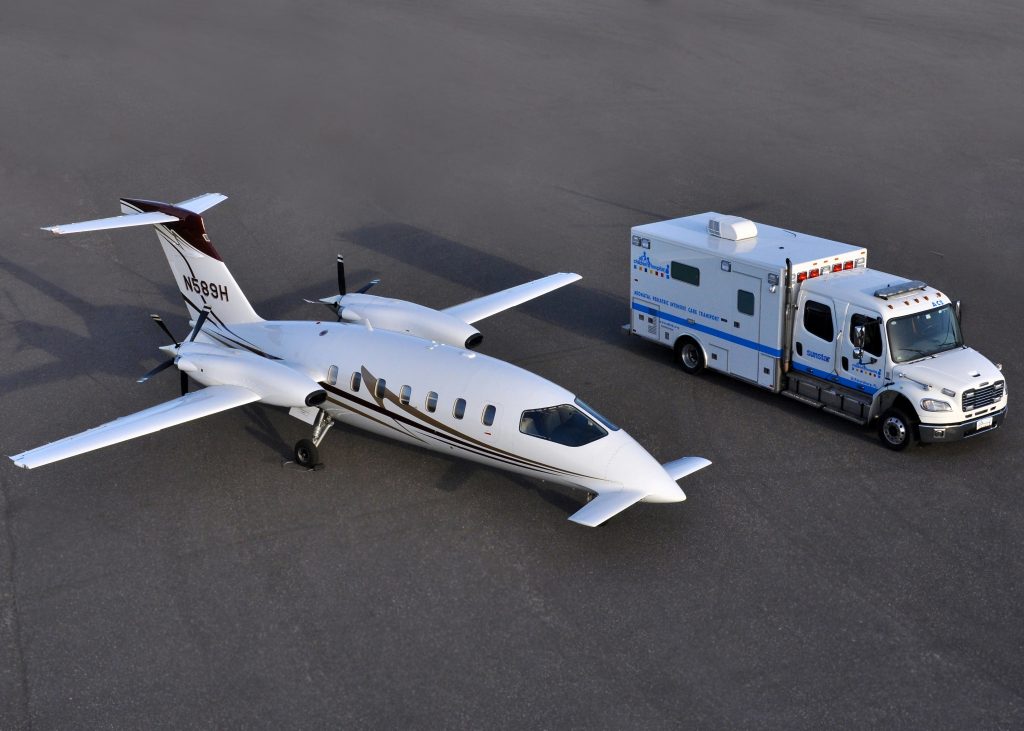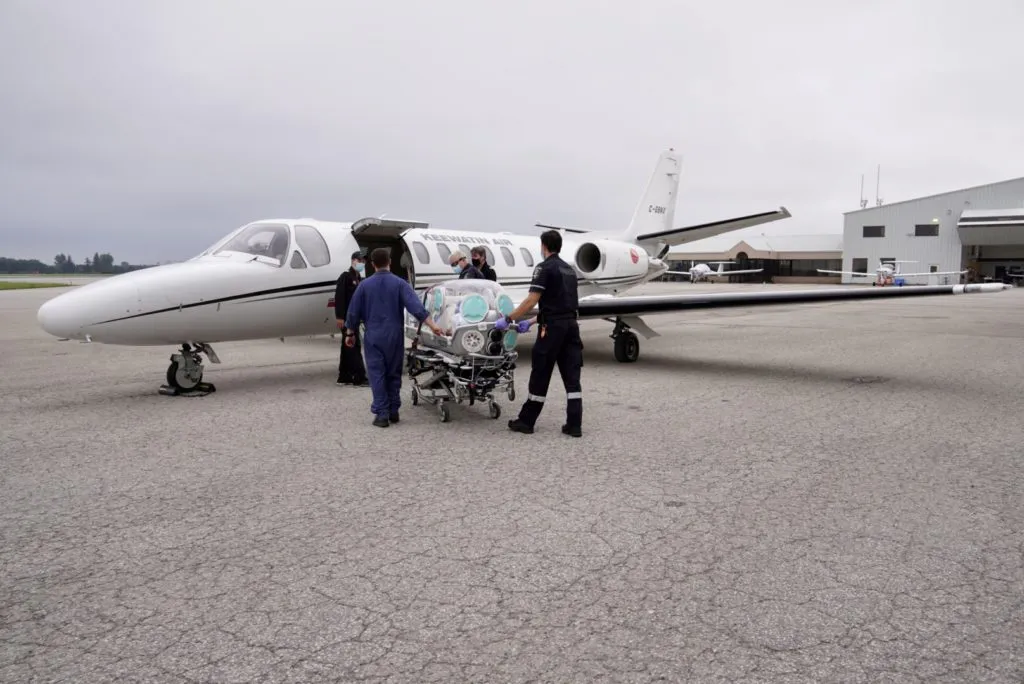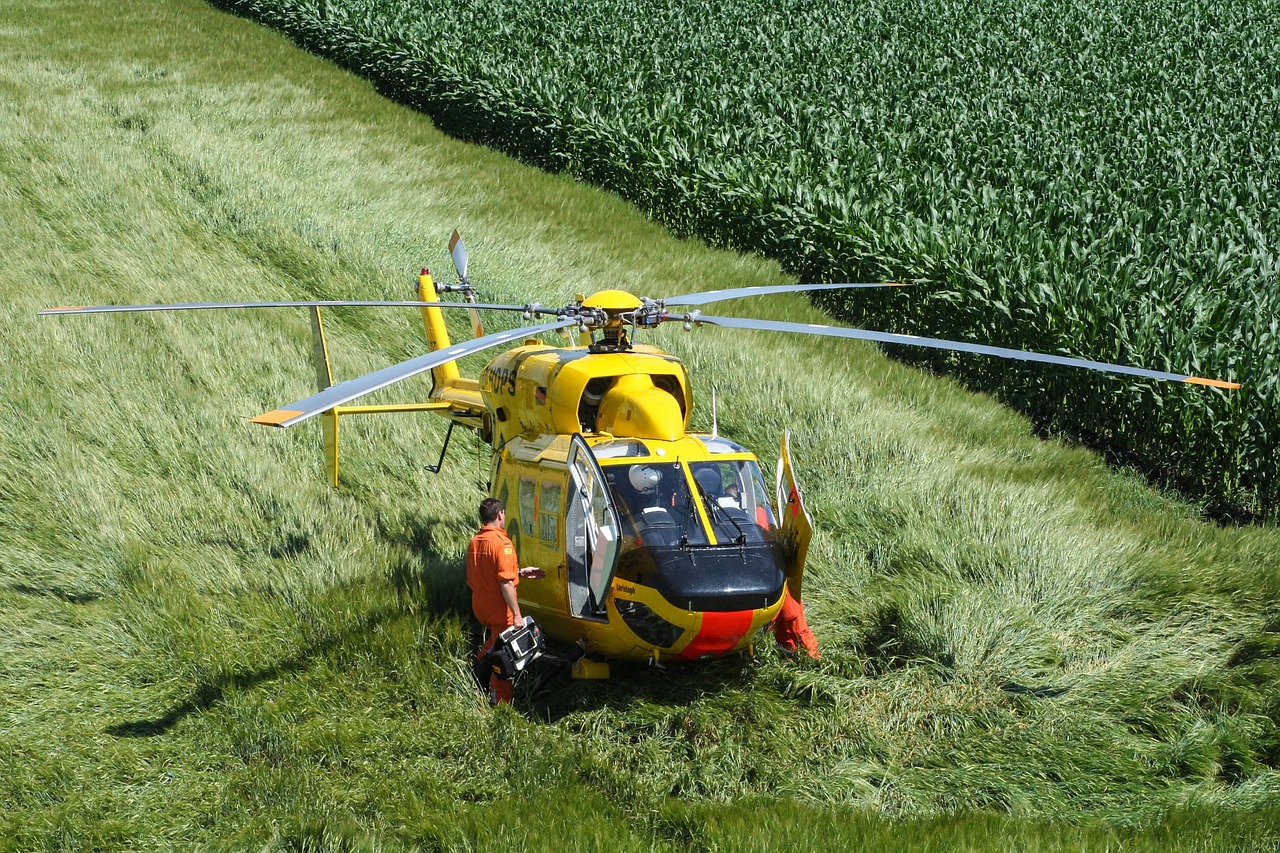When it comes to emergency medical services, time is of the essence. In critical situations, where every second counts, the availability of air ambulances can be a lifeline. These specialized aircraft are equipped with state-of-the-art medical equipment and staffed by highly trained professionals, ready to provide urgent medical care during long-distance transportation. International air ambulance transports have become increasingly crucial, bridging the gap between borders and ensuring that patients receive the necessary medical attention, regardless of their location. In this article, we will explore the vital role played by international air ambulance transports in saving lives and providing timely medical assistance across borders.
Importance of International Air Ambulance Transports
When it comes to medical emergencies, time is of the essence. Every second counts and delays in accessing critical care can have devastating consequences. This is where international air ambulance transports play a crucial role in connecting patients with the medical facilities they need, regardless of the borders that separate them.
Connecting Patients and Medical Facilities Across Borders
International air ambulance transports have the remarkable ability to bridge the gap between patients and medical facilities located in different countries. Whether it’s a patient in need of specialized treatment abroad or an expatriate or diplomat requiring repatriation, these services ensure that individuals can access the care they need, even when they are far from home.
Saving Lives in Emergency Situations
In emergency situations, such as natural disasters or accidents in remote areas, time is of the essence. International air ambulance transports can rapidly transport critically ill or injured patients to hospitals equipped to provide the necessary medical care. This quick response can often mean the difference between life and death.
Providing Access to Specialized Medical Care
Not all medical facilities are equipped to handle complex treatments or procedures. In some cases, patients may need to travel internationally to receive specialized care that is not available in their home country. International air ambulance transports ensure that patients can reach these specialized medical facilities, enabling them to receive the most appropriate and advanced treatment for their conditions.
Factors Influencing International Air Ambulance Transports
Several factors come into play when determining the feasibility and logistics of international air ambulance transports.
Geographical Distance
The distance between the patient’s location and the medical facility is a crucial factor to consider. Air ambulances are capable of covering vast distances in a relatively short period, making them a viable option for patients in remote or distant locations.
Policies and Regulations
Each country has its own set of policies and regulations regarding international air ambulance transports. These can include obtaining necessary permits, adhering to customs and immigration protocols, and complying with aviation regulations. The coordination of these factors is essential to ensure smooth operations and patient safety.
Availability and Coordination
The availability of suitable air ambulances, qualified medical crew, and necessary equipment is vital for successful international air ambulance transports. Effective coordination among healthcare providers, aviation authorities, and other involved parties is critical to ensure timely and efficient patient transfers.

Types of International Air Ambulance Transports
International air ambulance transports come in various forms, depending on the patient’s condition, the distance to be covered, and other logistical considerations.
Fixed-Wing Air Ambulances
Fixed-wing air ambulances are specially equipped airplanes that provide a controlled and stable environment for patients during transport. These aircraft are capable of flying longer distances and are suitable for intercontinental transfers. Fixed-wing air ambulances are often equipped with advanced life support systems and medical personnel trained to handle critical care situations.
Helicopter Air Ambulances
Helicopter air ambulances are commonly used for short to medium distances and in areas with limited access, such as mountainous regions or densely populated cities. With their ability to land in confined spaces, helicopters can provide rapid response in emergency situations and transport patients quickly to nearby medical facilities.
Commercial Airline Medical Escorts
For patients who are stable and require non-emergency medical transport, commercial airline medical escorts can be arranged. In these cases, medical professionals accompany the patient on a commercial flight, ensuring their safety and providing any necessary medical care throughout their journey. This option is often more cost-effective for patients who do not require intensive care during transport.
Specialized Equipment and Staff
International air ambulance transports require specialized equipment and highly trained medical staff to ensure the safety and well-being of patients during transport.
Advanced Life Support Systems
Air ambulances are equipped with advanced life support systems, including cardiac monitors, ventilators, and medication administration capabilities. These systems allow medical personnel to provide critical care to patients while in transit, ensuring that their medical needs are met at all times.
Medical Crew and Expertise
Qualified medical personnel, such as doctors, nurses, and paramedics, are an integral part of international air ambulance transports. These professionals bring their expertise and experience in handling critical care situations and ensure that patients receive the necessary medical attention throughout the journey.
Equipment for Different Medical Needs
Different medical conditions require specific equipment and facilities. International air ambulance transports are equipped with specialized equipment to cater to various medical needs, such as neonatal incubators for newborns, cardiac monitors for heart patients, and ventilators for patients requiring respiratory support.

Medical Referrals and Repatriation
International air ambulance transports play a vital role in facilitating medical referrals and repatriation of expatriates or diplomats.
International Medical Referrals
In cases where patients require specialized or advanced treatments not available in their home country, international medical referrals are made. International air ambulance transports ensure that patients can safely and efficiently travel to the medical facility recommended by their healthcare providers.
Repatriation of Expatriates or Diplomats
When individuals living or working abroad require medical care, repatriation becomes necessary. International air ambulance transports enable the safe and timely return of expatriates or diplomats to their home countries, where they can receive the necessary medical attention.
Coordination and Logistics
Successful international air ambulance transports rely on effective coordination and meticulous logistical planning.
Organizing Ground Transportation
From the patient’s location to the airport, and from the destination airport to the medical facility, ground transportation must be arranged seamlessly. This ensures that patients are transported safely and efficiently, minimizing any further delays or discomfort.
Clearing Customs and Immigration
International air ambulance transports involve crossing borders, which necessitates adhering to customs and immigration procedures. Clearances must be obtained in a timely manner to prevent any unnecessary delays and allow the smooth movement of patients and medical crews across international boundaries.
Securing Landing Permits
Landing permits at both the departure and destination airports are essential for international air ambulance transports. These permits ensure that the aircraft can land and take off safely, complying with all aviation regulations. Obtaining landing permits involves coordination between aviation authorities and ground staff to facilitate a hassle-free journey.

Medical Escort Services
For patients who are stable but require assistance during air travel, medical escort services offer a valuable solution.
Accompanying Patients on Commercial Flights
Medical escort services involve qualified medical professionals accompanying patients on commercial flights. These professionals ensure that patients receive the necessary medical attention and assistance throughout the journey, allowing them to travel safely and with peace of mind.
Ensuring Continuity of Care
Medical escort services provide continuity of care during air travel, particularly for patients with chronic illnesses or those recovering from surgeries. The medical professionals on board can administer medication, monitor vital signs, and respond to any medical emergencies, ensuring that patients receive the same level of care they would in a hospital setting.
Non-emergency Medical Escorts
Not all medical transport requires emergency assistance. Non-emergency medical escorts cater to patients who require assistance during air travel but are in stable condition. These services allow patients to travel comfortably and safely, ensuring they reach their destination without compromising their health.
Challenges of International Air Ambulance Transports
While international air ambulance transports serve as a lifeline across borders, they also face several challenges that need to be addressed.
Language and Cultural Barriers
International air ambulance transports involve interactions with patients, medical staff, and authorities from different countries. Language and cultural barriers can sometimes present obstacles in effective communication and understanding, which can impact patient care and overall coordination.
Lack of Medical Infrastructure
Not all regions have well-developed medical infrastructure, especially in remote or underserved areas. This poses challenges for air ambulance transports, as access to suitable medical facilities may be limited, requiring longer distances to be covered, or alternative arrangements to be made.
Weather and Geographical Challenges
Navigating through adverse weather conditions or challenging geographical terrains can pose significant challenges for air ambulance transports. Earthquakes, floods, or extreme weather events may also impact accessibility, prolonging journey times and requiring additional precautions to ensure patient safety.

Insurance and Financial Considerations
Insurance coverage and financial considerations play an essential role in international air ambulance transports.
Coverage for Air Ambulance Services
Insurance policies may vary in coverage for air ambulance services. It is crucial for individuals to understand their insurance policies and ensure they have adequate coverage for international air ambulance transports. Being aware of the extent of coverage can help prevent unexpected financial burdens during medical emergencies.
Determining Costs and Payment
The cost of international air ambulance transports can vary depending on various factors, including the distance traveled, medical equipment required, and the complexity of the medical condition. Determining these costs and arranging for payment, whether through insurance or other means, is an important aspect of coordinating international air ambulance transports.
Conclusion
International air ambulance transports serve as a lifeline across borders, connecting patients with the medical care they need regardless of geographical distances. These transports are vital in emergency situations, providing swift response and saving lives. They also cater to patients requiring specialized care or repatriation. With specialized equipment, trained medical staff, and meticulous coordination, international air ambulance transports ensure the safety and well-being of patients throughout their journey. However, challenges such as language barriers, lack of medical infrastructure, and adverse weather conditions necessitate careful planning and coordination. Insurance coverage and financial considerations also play a vital role in accessing these life-saving services. By understanding the importance, types, and factors influencing international air ambulance transports, individuals can be better prepared to make informed decisions when faced with medical emergencies, ensuring timely access to the care they need.



